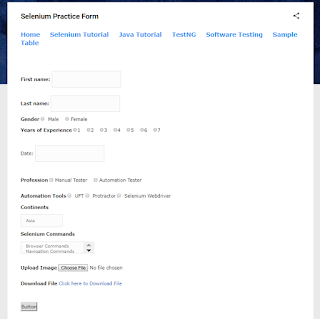Using Lambda Functions in Python: Syntax, Examples, and Applications
Table of Contents
1. Introduction to Lambda Functions
- What are lambda functions?
- Syntax of lambda functions
- Benefits of using lambda functions
2. Assigning Lambda Functions to Variables
- Creating lambda functions
- Assigning lambda functions to variables
- Using variables to invoke lambda functions
- Calling lambda functions directly
- Providing arguments to lambda functions
- Returning values from lambda functions
- Using lambda functions in arithmetic expressions
- Using lambda functions in conditional expressions
- Applying lambda functions in list comprehensions
- Introduction to higher-order functions
- Understanding map(), filter(), and reduce()
- Using lambda functions with map()
- Using lambda functions with filter()
- Using lambda functions with reduce()
1. Introduction to Lambda Functions in Python
In Python, lambda functions, also known as anonymous functions, allow you to create small, one-line functions without the need for a formal def statement. Lambda functions are useful when you want to define a simple function without the overhead of a regular function definition. This tutorial will guide you through the concept of lambda functions, their syntax, and various use cases.
What are Lambda Functions?
Lambda functions are small, anonymous functions that are defined using the lambda keyword. Unlike regular functions defined with def, lambda functions don't have a name and are typically used for short and simple tasks. They are defined inline and can be used wherever a function object is required.
The general syntax for a lambda function is as follows:
pythonlambda arguments: expression
The lambda function takes arguments, performs a single expression, and returns the result of that expression. The result can be a value, a computation, or any other valid expression in Python.
Lambda Function Syntax:
The syntax of a lambda function consists of three main parts:
- The
lambdakeyword: It indicates the start of a lambda function definition. - Arguments: These are the input parameters for the lambda function. They can be zero or more, separated by commas.
- Expression: It represents the computation or operation performed by the lambda function. It is an expression that gets evaluated and returned.
Here's an example that demonstrates the basic syntax of a lambda function:
pythonmultiply = lambda x, y: x * y
result = multiply(3, 5)
print(result) # Output: 15In this example, we define a lambda function multiply that takes two arguments x and y and returns their product. We then call the lambda function with arguments 3 and 5, and the result is assigned to the variable result.
2. Benefits of Lambda Functions
Lambda functions offer several advantages in Python programming:
- Concise code: Lambda functions allow you to define functions quickly and concisely in a single line, avoiding the need for a full function definition.
- Inline usage: Lambda functions can be used directly within expressions or as arguments to other functions without the need for a separate function definition.
- Readability: Lambda functions are particularly useful when the function logic is simple and can be easily understood at a glance.
3. Assigning Lambda Functions to Variables
Creating lambda functions
Lambda functions are often created for specific tasks. For example:
pythonmultiply = lambda x, y: x * y
Assigning lambda functions to variables
You can assign lambda functions to variables for later use:
pythonmy_function = lambda arguments: expression
Using variables to invoke lambda functions
Once assigned to a variable, you can use the variable to invoke the lambda function:
pythonresult = my_function(arguments)
4. Invoking Lambda Functions
Calling lambda functions directly
Lambda functions can be called directly without assigning them to a variable:
pythonresult = (lambda x, y: x + y)(5, 10)
Providing arguments to lambda functions
Lambda functions can take any number of arguments, just like regular functions. Provide the required arguments when invoking the lambda function.
Returning values from lambda functions
Lambda functions can return a value by including an expression as the return value. For example:
pythonsquare = lambda x: x ** 2
result = square(5)5. Working with Lambda Functions in Expressions
Using lambda functions in arithmetic expressions
Lambda functions can be used directly in arithmetic expressions, allowing you to perform calculations in a concise manner:
pythonresult = (lambda x, y: x * y)(3, 4) + 10
Using lambda functions in conditional expressions
Lambda functions can be used in conditional expressions to provide dynamic conditions:
pythoncheck_even = lambda x: x % 2 == 0
result = check_even(5)Applying lambda functions in list comprehensions
Lambda functions can be used inside list comprehensions to transform or filter elements:
pythonnumbers = [1, 2, 3, 4, 5]
squared_numbers = [lambda x: x ** 2 for x in numbers]6. Using Lambda Functions as Arguments
Higher-order functions are functions that can accept other functions as arguments or return functions as results. Lambda functions are often used as arguments to higher-order functions.
Understanding map(), filter(), and reduce()
map() applies a function to each element of an iterable and returns a new iterable with the results.filter() filters elements from an iterable based on a condition defined by a function and returns a new iterable with the filtered elements.reduce() applies a function to the elements of an iterable in a cumulative way and returns a single value.
6.1. Using lambda functions with map()
Lambda functions can be used with map() to transform elements of an iterable:
pythonnumbers = [1, 2, 3, 4, 5]
squared_numbers = list(map(lambda x: x ** 2, numbers))In the above example, the lambda function lambda x: x ** 2 is applied to each element of the numbers list using map(), resulting in a new list squared_numbers containing the squared values.
6.2. Using lambda functions with filter()
Lambda functions can be used with filter() to filter elements of an iterable based on a condition:
pythonnumbers = [1, 2, 3, 4, 5]
even_numbers = list(filter(lambda x: x % 2 == 0, numbers))In this example, the lambda function lambda x: x % 2 == 0 is used with filter() to filter out the even numbers from the numbers list, resulting in a new list even_numbers containing only the even values.
6.3. Using lambda functions with reduce()
Lambda functions can be used with reduce() to perform cumulative operations on elements of an iterable:
pythonfrom functools import reduce
numbers = [1, 2, 3, 4, 5]
product = reduce(lambda x, y: x * y, numbers)Here, the lambda function lambda x, y: x * y is used with reduce() to calculate the product of all the elements in the numbers list.
By understanding how to use lambda functions as arguments to higher-order functions like map(), filter(), and reduce(), you can write concise and efficient code for transforming, filtering, and aggregating data in Python.
7. Using Lambda Functions as Arguments
One of the common use cases of lambda functions is to pass them as arguments to higher-order functions such as map(), filter(), and sort(). These functions can take lambda functions as arguments to perform operations on sequences of elements.
Example 1: Using lambda with map() function:
The map() function applies a given function to each element of an iterable and returns a new iterable with the results.
pythonnumbers = [1, 2, 3, 4, 5]
squared_numbers = list(map(lambda x: x ** 2, numbers))
print(squared_numbers) # Output: [1, 4, 9, 16, 25]In this example, we use a lambda function to square each element in the numbers list using the map() function. The lambda function takes an argument x and returns its square.
Example 2: Using lambda with filter() function:
The filter() function creates a new iterable that contains only the elements for which the given function returns True.
pythonnumbers = [1, 2, 3, 4, 5, 6, 7, 8, 9, 10]
even_numbers = list(filter(lambda x: x % 2 == 0, numbers))
print(even_numbers) # Output: [2, 4, 6, 8, 10]In this example, we use a lambda function with the filter() function to filter out the even numbers from the numbers list. The lambda function takes an argument x and returns True if the number is even (x % 2 == 0), and False otherwise.
Lambda functions can be used with various other functions that accept functions as arguments, such as sorted(), max(), min(), and more. They provide a concise way to define simple functions on the fly without the need for a separate function definition.
8. Limitations of Lambda Functions:
While lambda functions are useful for writing compact and concise code, they have certain limitations:
- Single expression: Lambda functions can only contain a single expression. They cannot have multiple statements or complex logic.
- No documentation string: Lambda functions do not support documentation strings (
docstring) to describe their purpose or usage. - Limited readability: Complex lambda functions with long or complicated expressions can be difficult to read and understand.
As a general guideline, it's recommended to use lambda functions for simple and short computations. For more complex or reusable functions, it's better to use regular named functions defined with the def statement.
Conclusion
Lambda functions, also known as anonymous functions, provide a way to define small, one-line functions in Python without the need for a formal def statement. They are useful for writing quick and simple functions, especially when used as arguments to higher-order functions. Lambda functions offer concise code and inline usage, improving code readability and reducing the need for unnecessary function definitions. However, it's important to be mindful of their limitations and use regular functions for more complex logic or reusable functions.









.png)









Comments
Post a Comment